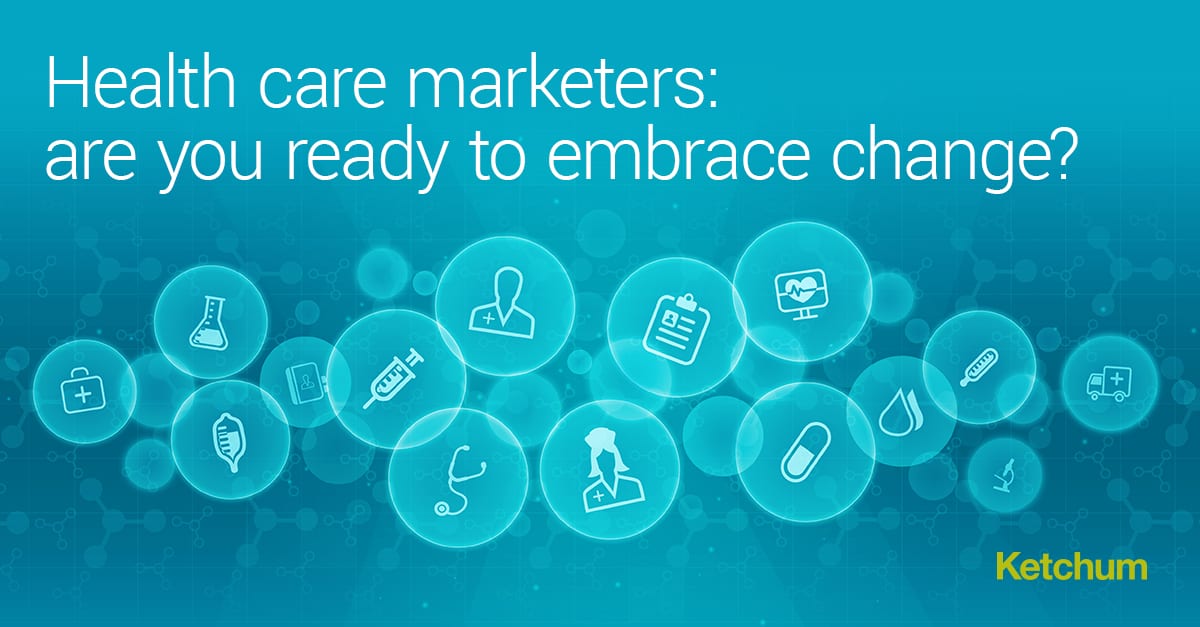“The health care industry is addicted to radical incrementalism. We think innovation is a new website.”
These were the words Dr. Paul Keckley used to kick off his talk at last week’s Society for Healthcare Strategy & Market Development (SHSMD) 2019 Connections conference in Nashville. The room was filled with health care marketers and communicators from around the country. As soon as he spoke these words out loud, nervous giggles and nods of agreement filled the room. He got our attention real fast.

We have all known for some time that health care is the industry that lags in consumer responsiveness. The industry has been slow to adapt technology, it manages by committees and it forgets to speak to consumers like human beings.
The point Dr. Keckley was making is that the health care industry, as it stands today, has run out of time. This same message was echoed by Dr. Zeev Neuwirth, Senior Medical Director of Population Health at Atrium and author of Redefining Healthcare, in a separate talk at the conference. My favorite quote from his talk, “Employers are no longer angry customers. They’re now our competitors.”
It was the same theme we heard from almost every speaker. Consumers are fed up. They don’t understand why health care can’t mirror every other personalized, real-time experience they enjoy. Employers are fed up. They’re tired of waiting and being disappointed by solutions that don’t help. And the capital markets are fed up sitting on the sidelines. They’re itching to jump in, fix the problem and make some money.
As you read my four key takeaways from SHSMD, think about your own organization and what you are doing to ensure you continue to be relevant. Does your organization have a plan? Are they even thinking about these issues?
1. Employers and Venture Capital are rocking the boat:
According to Dr. Keckley, $2 Trillion is sitting in the market waiting to invest in health care. He said there were 314 private equity deals last year alone as it relates to health care. And, perhaps most interesting, Dr. Keckley pointed out there were more than 100 private equity deals done with doctors. Why is this important? Private equity firms see an opportunity to cash in. Employers are also ready to take matters into their own hands. They see three opportunities: 1) fix the problem for their own employees, 2) save money and 3) make money while they do it. As health care communicators, we’ve known our competitive set is changing. It’s critical for us to study their models and how they engage with consumers.
2. We must approach health care with a tech company mindset:
A highlight this week was hearing from American poet Sekou Sundiata. He challenged how we think and how we approach problems. He said we’re prone to ask, “Why didn’t I think of that?” When instead we should ask, “Why didn’t I think LIKE that?” A simple tweak to the question but so powerful. This is how tech companies think, and it’s how they tackle a challenge. It’s exactly how they’re approaching health care. As health care communicators, we must push ourselves to think this way. We must find ways to push our executives to think this way, and we must empower our employees to think this way.
3. More pressure on the states to act:
No surprise, here’s what we heard: Washington, D.C. will remain deadlocked. Even if a Democrat wins the White House, if they can’t take the Senate, changes to health care—including action on prescription drugs and transparency—will go nowhere. We also are awaiting a Supreme Court ruling on whether the Affordable Care Act can stand. There’s a good chance the Court punts the solution to the states. As one speaker put it this week: As communicators, “you better have a desk beside your state advocacy lead.” Our job is to support our government affairs teams’ work. We should never get out ahead of them. We must stay aligned.
4. Primary care doctors matter, but consumers want hyper-personalized:
We know primary care physicians are the connectors in the health care system. What we can’t forget is that Millennials aren’t as loyal to specific doctors. They don’t always see the need. They’re more interested in a personal experience. Ease of use. Convenience. We’re starting to see new hyper-targeted primary care practices pop up. Dr. Neuwirth pointed out two: ChenMed and 98point6. These organizations are keeping it simple. In the case of ChenMed, it only treats patients with complex, chronic health conditions. That’s it. 98point6 delivers real-time diagnosis and treatments via a text-based app. Last year, this “virtual clinic” raised $50 million in its latest round and its Chief Product Officer, Rob Schwietzer, was one of the architects of Amazon’s Prime program. As Dr. Neuwirth called it, “hyper-segmented brands” are popping up and they’re growing. Why? Because they are tapping into the real mood and desires of consumers. If we don’t give patients the experience they want, they can and will find it somewhere else. That’s a shift in mindset. It’s also an opportunity for us to talk differently.
Shockingly, I don’t find any of these takeaways scary. I find them exciting and liberating, especially for all of us as communicators and marketers. We have an opportunity to be forward-looking. To listen to the conversation around us and bring ideas to our leadership. To enroll employees to help the organization evolve. Each one of us, as health care communicators, must find the courage to speak up. I don’t want to work in an industry that accepts “radical incrementalism” as our mantra. Let’s be fearless and embrace the change around us. Connect with me and let’s talk about how you get started.


